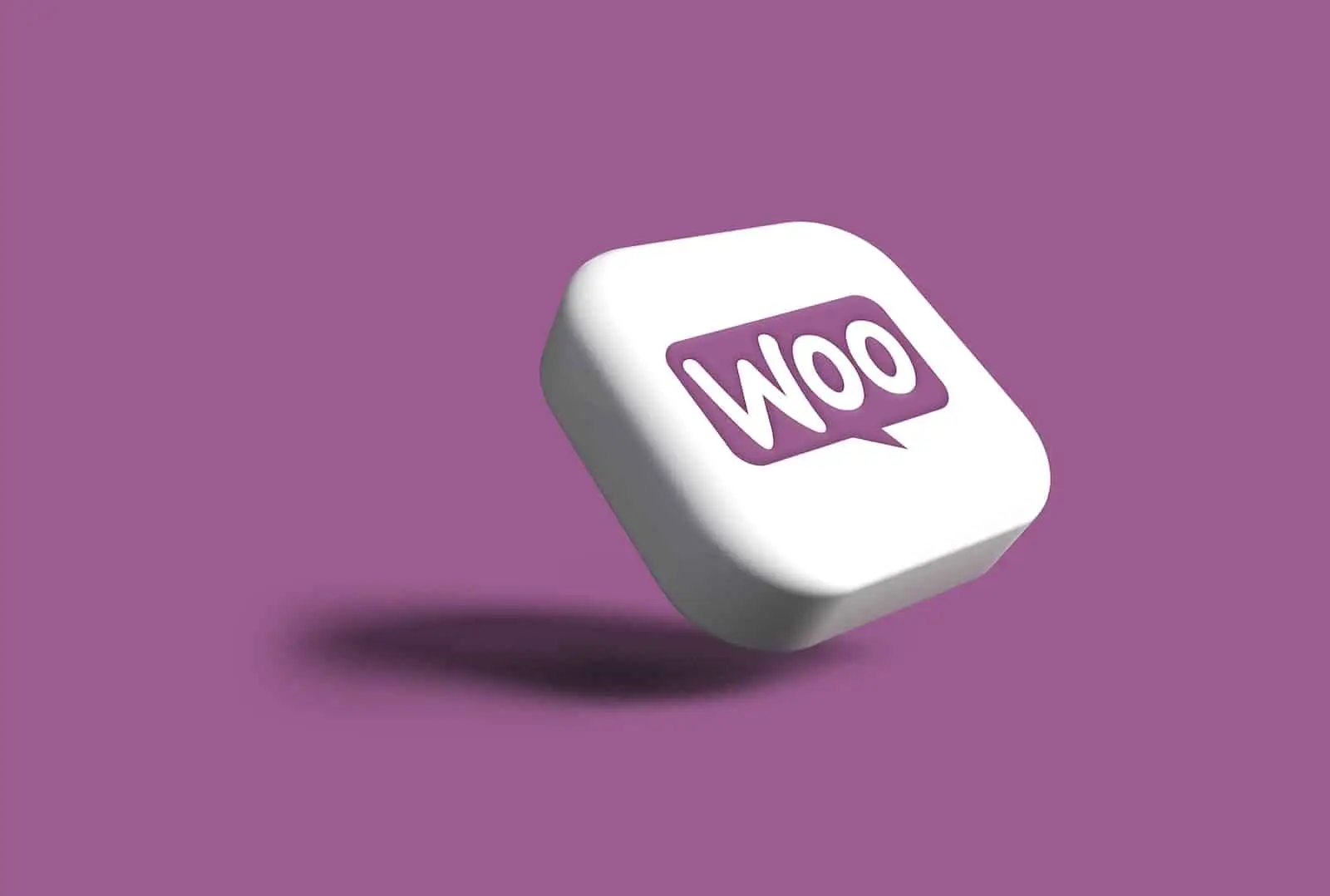The advent ofe-commerce revolutionized the business world, and the dropshipping has established itself as one of the most attractive business models in the digital landscape. But what exactly is dropshipping and how do you start an e-commerce based on this model? Let's find out together.
What is Dropshipping?
The dropshipping is a business model in which an online store sells products without physically having them in stock. When a customer places an order, the item is purchased directly from the supplier and shipped directly to the customer. This eliminates the need for the retailer to manage or ship inventory. More details on Wikipedia.
Why choose Dropshipping?
- Low initial costs: There is no need to invest in inventory, thus reducing financial risks.
- Ease of management: Without the need to manage a warehouse or physical shipments, operations are simplified.
- Wide variety of products: You can offer a wide range of products without worrying about inventory management.
How to Start a Dropshipping E-commerce: Step by Step
1. Research and selection of a business idea
Before launching yourself into the world of e-commerce with a dropshipping model, it is crucial to identify and perfect your business idea. This process is not just a random choice, but rather a careful reflection on the direction in which you want your business to develop.
Starting with the niche selection, it is essential to do in-depth market research. There are products that may have great demand, but which are also saturated in terms of competition. For example, while technology and fashion are very popular industries, they can also be highly competitive and, therefore, may require higher marketing investments to emerge.
On the other hand, by choosing a specific niche, perhaps less mainstream, such as 'sustainable office accessories' or 'eco-friendly clothing for babies', you may find a market segment which, despite being less broad, is also less saturated and potentially more profitable in terms of margin.
The key is to find a balance: a product or range of products that respond to one real need or desire of consumers, but at the same time they don't expose you to too ruthless competition. Use tools like Google Trends, competitor analysis, or market surveys to better understand where you might position yourself in the vast world of e-commerce.
2. Find reliable suppliers
One of the cornerstones of success in dropshipping is choosing reliable and honest suppliers. Product quality and shipping efficiency directly depend on them, so selecting trusted partners is crucial.

Platforms like Alibaba and Oberlo have established themselves as references in the industry for searching for suppliers. Both offer a wide range of manufacturers and distributors ready to collaborate with dropshipping retailers.
- AliExpress
- Global platform connecting sellers and suppliers from all over the world. While it's not specifically intended for dropshipping, many retailers use AliExpress to find and sell products. It is famous for its wide range of products and competitive prices.
- Website – https://www.aliexpress.com/
- SaleHoo
- SaleHoo is not only a dropshipping platform but also a large directory. It helps resellers connect with over 8,000 verified suppliers, offering a 60-day guarantee if you're not satisfied.
- Website – https://www.salehoo.com/
- Doba
- One of the most integrated dropshipping platforms, Doba allows sellers to access products from various suppliers from a single dashboard. The emphasis is on ease of integration and automation.
- Website – https://www.doba.com/
- Wholesale2b
- With Wholesale2b, you can have access to over a million products. The platform offers tools that help you upload products directly to your online store without having to manage inventories.
- Website – https://www.wholesale2b.com/
- Dropship Direct
- Offering over 100,000 products, Dropship Direct stands out for its vast selection. Additionally, they offer premium tools to help you automate your dropshipping business.
- Website – https://www.dropshipdirect.com/
- Sunrise Wholesale
- Sunrise Wholesale offers a combination of branded products and effective tools for selling online. Integrates directly with the main websites and marketplaces, also offering order tracking and management.
- Website – https://www.sunrisewholesalemerchandise.com/
- MegaGoods
- With a focus on electronics and video games, MegaGoods is perfect for those looking to specialize in these niches. They offer fast shipping and relatively low dropshipping costs.
- Website – https://www.megagoods.com/
- Inventory Source
- Inventory Source is not only a supplier, but also a tool. With over 230 dropship suppliers and automated integration, it helps you manage inventory and orders more efficiently.
- Website – https://www.inventorysource.com/
- National Dropshippers
- Offering products ranging from electronics to jewelry, National Dropshippers focuses on variety and quickly updating inventory. They have a unique pricing structure that may be advantageous for some retailers.
- Website – https://www.nationaldropshippers.com/
- Printful
- Specializing in print-on-demand, Printful enables vendors to offer customized products. You can sell clothing, accessories, home decor and more with your unique customization.
- Website – https://www.printful.com/
Evaluate reliability is critical. A reliable supplier will respect shipping times, guarantee high-quality products and have transparent communication. A delay in shipping or a defective product can damage your reputation, so choosing the right supplier can mean the difference between success and failure.
The reviews and history of the supplier they are precious resources in this selection phase. Read reviews left by other sellers or customers to get an idea of past experiences. If a provider has a history of positive reviews and customer satisfaction, they are likely a safe choice. However, beware of fake or manipulated reviews: always use a critical approach.
3. Register your business
The creation of an e-commerce business in Italy involves a series of procedures and bureaucratic requirements, as for any entrepreneurial activity. It is essential to understand and comply with Italian legislation to avoid legal and tax problems. Here is a detailed guide on the procedures and steps necessary to open an e-commerce in Italy from a fiscal and bureaucratic point of view.
-
Legal Form and Company Register
First of all, you need to choose the legal form of your company. There are several options to choose from, for example: sole proprietorship, partnership (snc, sas), joint-stock company (srl, spa). The choice will depend on various factors, including the size of your e-commerce, the capital available and the number of members.
Once you have chosen the legal form, you will need to register your company at the Company Register of the Chamber of Commerce competent for the territory. This registration is mandatory to officially start your business.
-
VAT number and tax code
Opening a VAT number is essential for anyone who wants to start an e-commerce business. This allows you to issue invoices and manage all commercial transactions. You must request it from the Revenue Agency and make sure you file your VAT return every year. In addition to the VAT number, you will also need to have a Tax Code, which in many cases coincides with the VAT number for companies.
-
Authorizations and Licenses
Depending on the type of products you plan to sell, you may need specific permissions. For example, if you sell food products, you will need the appropriate health permits. It is essential to consult with a consultant or inquire at the relevant offices about the licenses necessary for your specific business.
-
E-commerce regulation
When opening an e-commerce in Italy, it is essential to respect the legislation on distance selling and consumer protection. This includes the right of withdrawal, the protection of personal data and the conditions of sale. It is highly recommended to have clear terms and conditions on your website and ensure they are in compliance with Italian laws.
-
Electronic Invoicing System
In Italy, electronic invoicing is mandatory. This means that you will need to have a system that allows you to issue electronic invoices and store them in digital format. There are several software providers that offer integrated solutions with the main e-commerce systems.
-
Tax Reports and Declarations
Once your e-commerce is up and running, you will need to carefully manage your accounting and ensure you submit all tax and VAT returns within the established deadlines.
4. Create your e-commerce
Starting an e-commerce business is a challenge, but it's also an incredible opportunity to reach customers around the world. One of the most crucial decisions is choosing the right platform. There are several solutions on the market, each with its pros and cons.

Platforms Overview
- Shopify: It is a turnkey solution, ideal for those who want to start immediately without worrying too much about the technical part. Shopify offers secure hosting, designer themes, and a user-friendly environment. You can easily add products, manage inventory, and customize your store design.
- Magento: A powerful and flexible platform, especially suitable for large businesses or shops with a large inventory. Requires some technical knowledge for installation and customization.
- PrestaShop: Offers a wide range of functionality with over 300 built-in functions and thousands of modules and themes available. It is free, but some modules may require a fee.
- Wix eCommerce: Drag-and-drop solution, great for those who need a quick and easy setup. Perfect for small online shops or artists who want to sell their works.
- BigCommerce: An all-in-one platform that grows with your business. It offers a wide range of native features and customization options.
Focus on WooCommerce
WooCommerce is a free plugin for WordPress, the world's most popular content management platform. It combines the flexibility of WordPress with powerful e-commerce features, making it an excellent choice for entrepreneurs of all sizes.
Advantages:
- Flexibility: With WooCommerce, you have complete control over your store. You can customize every aspect, from design to products, including shipping and payment settings.
- Scalability: Regardless of the size of your business, WooCommerce can handle it. It grows with you, from startup to expansion.
- Extensibility: With thousands of plugins available, you can add virtually any functionality to your store.
Recommended Plugins for Dropshipping with WooCommerce:
- AliDropship: This plugin turns your WooCommerce site into an efficient dropshipping store. It is optimized to work with AliExpress, allowing for easy product import and order automation. AliDropship
- WooDropship: Similar to AliDropship, WooDropship makes it easy to import products from AliExpress directly into your WooCommerce store. WooDropship
- Dropified: This extension integrates several marketplaces, not just AliExpress, thus providing a wider range of options. It comes with powerful features like auto-updating inventory. Dropified
- WZone – WooCommerce Amazon Affiliates: If you want to focus on dropshipping Amazon products, this plugin is for you. Makes it easy to import and sync Amazon products to your store. WZone
- Spocket: This plugin stands out for its focus on US and European suppliers, ensuring faster shipping. You can import products from different categories and niches. Spocket
While the choice to venture into dropshipping may seem attractive, it is essential to equip yourself with the right tools to ensure efficient and automated management of your store. The WooCommerce plugins mentioned above are among the best in the industry for facilitating and optimizing the dropshipping process, making it less burdensome and more profitable.
5. Plan marketing strategies
Marketing is the beating heart of any e-commerce business. Without an effective presence in the vast digital ecosystem, even the most sophisticated and well-stocked e-commerce site may not get the traffic or conversions you want. While there are multiple marketing channels, Google Ads and Google Shopping represent two fundamental pillars for any e-commerce, especially for those who operate in dropshipping.
Google Ads: Customized advertising for your e-commerce
Google Ads, formerly known as Google AdWords, is an online advertising platform that allows businesses to create targeted advertisements for Google and its network of advertising partners. Here's how your e-commerce can benefit:
- Greater Visibility: With Google Ads, your ads can appear right when potential users search for products or services similar to yours on Google.
- Target Audience: You can segment your ads based on demographics, geolocation, interests and search behavior, ensuring your products are seen by the right audience.
- Pay per Click (PPC): You only pay when someone clicks on your ad. This means that your advertising budget is used efficiently, bringing only interested visitors to your site.
- Analysis and Optimization: Google Ads offers detailed analytics tools that help you understand the performance of your ads and make changes to improve them.
Google Shopping: Showcase your products
Google Shopping is a subsection of Google Ads specifically designed for e-commerce. Here's how it can accelerate your sales:
- Product Display: Unlike traditional text ads, Google Shopping ads show a photo of your product, along with the title, price, and store name.
- High purchase intention: Users who click on Google Shopping ads generally have a higher purchase intent than other channels.
- Better ROI: Google Shopping ads often have a lower cost per conversion than text ads, making them extremely efficient from an ROI perspective.
- Direct Competition: With Google Shopping, your products are directly compared to those of your competitors, meaning a competitive price and positive reviews can give you a significant advantage.
Conclusions: The Crucial Importance of Planning in Creating a Dropshipping E-commerce
Starting an e-commerce business, especially dropshipping, may seem like a relatively simple and affordable venture. You don't need a warehouse, nor a large inventory, and many of the logistical responsibilities are handled by the supplier. However, as any experienced entrepreneur will tell you, initial simplicity can hide unexpected challenges and hidden costs that may emerge along the way. This is why accurate and detailed planning is not only recommended, but essential.
First of all, it is crucial to understand that dropshipping is not a “golden ticket” to instant success. Like any other business model, it requires commitment, dedication, and most importantly, a clear understanding of what you are doing. Without a well-articulated strategy, you may find yourself navigating by sight, wasting resources and time.
One of the most common mistakes made by newbies to dropshipping is underestimating the associated costs. While you may not have the expense of running a warehouse or inventory, there are other costs to consider. These can include e-commerce platform fees, marketing costs, supplier commissions, shipping costs and, last but not least, hidden costs that may emerge from interactions with unreliable suppliers or complex return policies.
Marketing, in particular, can make up a significant portion of your budget. Google Ads, Google Shopping, social media marketing and other forms of online advertising can quickly add up costs. And while these platforms can offer impressive ROI when managed correctly, without a clear and measured strategy, you could end up spending a lot without getting the results you were hoping for.
Additionally, dropshipping often has a lower profit margin than other business models. This means that every expense, every decision and every strategy must be precisely calibrated to ensure profitability. A small mistake in an advertising campaign or a series of returns can significantly erode your earnings.
But, beyond costs, there is another fundamental aspect to consider: reputation. In an age where online reviews have a huge influence on consumer purchasing decisions, ensuring that every customer has a positive experience is essential. A bad choice of supplier, shipping problems or problems with product quality can quickly damage your reputation, making it difficult for your e-commerce to grow or even survive.
In conclusion, while dropshipping certainly offers amazing opportunities and can be a great starting point in the world of e-commerce, it should not be entered into lightly. It is essential to do your homework, study the market, understand every aspect of the business and plan every move carefully. Invest time and energy in planning and ongoing training, and you'll end up with a business that's resilient, profitable, and ready to navigate the sometimes turbulent waters of the online marketplace.
📌 Do you need further information or support? Do not hesitate to contact us! 📩 Send an email to support@gtechgroup.it or write to us WhatsApp on 0465 84 62 45.
Happy dropshipping everyone!


